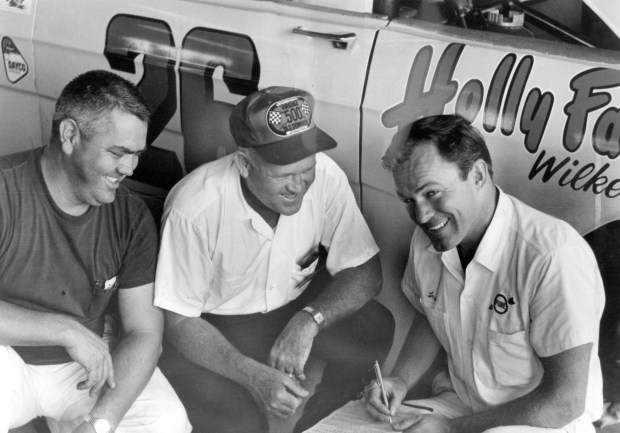Elmhurst native Fred Lorenzen got his start in auto racing as an 18-year old, racing stock cars at Soldier Field in Chicago in the early 1950s. Success there eventually led to racing stardom in a career in which Lorenzen was credited with 158 NASCAR starts and 26 wins, including the 1965 Daytona 500 and the World 600 that same year.
In 1998 he was named one of NASCAR’s 50 Greatest Drivers and in 2015 he was inducted into the NASCAR Hall of Fame, an accomplishment all the more remarkable given his Midwest roots at a time when the sport was dominated by Southerners.
Lorenzen died Dec. 18, a few days before what would have been his 90th birthday, according to statements from his family and NASCAR.
“The NASCAR Hall of Fame team joins the racing community in mourning the passing of Fred Lorenzen,” NASCAR Hall of Fame Executive Director Winston Kelley said in a statement, calling Lorenzen “a legend whose impact will forever be felt in the sport.”
In a death notice, his family noted he had battled dementia for over 20 years. His daughter, Amanda Lorenzen Gardstrom, told the Tribune in 2015 she thought her father’s dementia might be related to long-ago crashes.
Some of his memories were not so clear in 2015. But the Hall of Fame induction that January was a special time for Lorenzen and his family.
“We all flew down to Charlotte,” Gardstrom said. “We were there for the whole weekend. I haven’t seen my dad so happy with a glow in his eyes and smiling for so long.
“He was so happy – he recognized all his old racing buddies. What a gift to give to a man who’s given so much to NASCAR. That was the best thing.”
Along with his racing success, Lorenzen’s personality helped put a face on the sport.
“Fred’s nicknames personify him as well as anyone,” Kelley said. “Fast Freddie or Fearless Freddie described his penchant for driving fast and on the largest of NASCAR tracks. The Golden Boy was a nod to his Hollywood good looks. That combination made him one of the most successful and recognizable stars of NASCAR in the 1960’s and early 1970’s. His leading-man good looks and smooth driving earned him legions of fans and brought a new style and class to the sport.”
Even before those early stock car races in the Chicago area, Lorenzen was speeding around the streets of Elmhurst in a lawnmower-powered go-kart he built.
“He always had a passion for cars,” Gardstrom said in 2015.

Stan Kalwasinski, who writes about motor sports, called Lorenzen “a racing icon” in the Chicago area. Kalwasinski, who met Lorenzen several times, said he first heard of him around 1963 when network sports television shows included short clips or excerpts of auto races.
Gardstrom said that after winning local United States Auto Club events in the late 1950s at both Soldier Field and at O’Hare Stadium — a former racing venue south of the airport — her father shifted gears.
“He decided he wanted to try out NASCAR on his own,” she said, “but he went broke twice.”
However, Lorenzen, also known as “The Elmhurst Express,” never gave up. He finally connected with Ralph Moody of the famed Holman Moody Ford racing group, and in late 1960 Moody offered him an opportunity to drive in NASCAR events.
Lorenzen’s career with NASCAR was relatively short. Except for a brief comeback, he retired from racing in 1967, saying he was tired of the traveling and living out of hotels.
He shifted gears again, transitioning into a successful career in real estate.
Kelley said Lorenzen’s selection for the Hall of Fame recognized his overall success both on and off the track and his contributions to the sport.
“He excelled on big tracks and big races,” Kelley said, noting that Lorenzen was the first driver to earn $100,000 in a season, doing so in 1963.
Kelley also noted Lorenzen’s Elmhurst roots.
“He was one of the first non-Southerners to come into NASCAR and have great success.”
In addition to Gardstrom, Lorenzen’s survivors include his son Chris Lorenzen and two grandchildren.
Graydon Megan is a freelance reporter for Pioneer Press.




